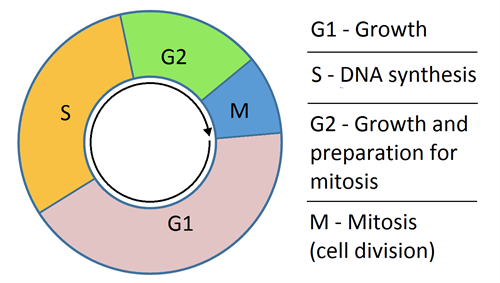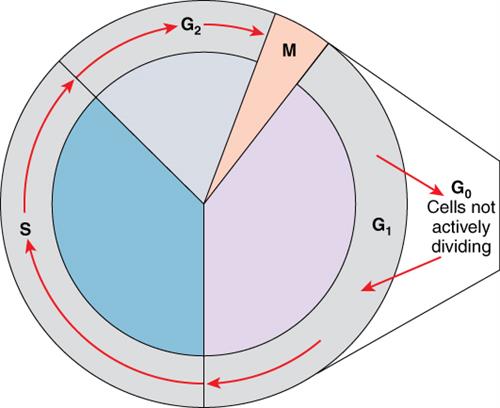
PUMPA - SMART LEARNING
எங்கள் ஆசிரியர்களுடன் 1-ஆன்-1 ஆலோசனை நேரத்தைப் பெறுங்கள். டாப்பர் ஆவதற்கு நாங்கள் பயிற்சி அளிப்போம்
Book Free DemoIntroduction:
The first important thing in the formation of life on earth is the formation of a first cell. What do you think the second most important thing that happened in the creation of life?
It is the first formed cell gaining the capability of self-replication through the process of cell division. So, by the process of cell division, life flourish across the world.
What is cell division?
Cell division is the process by which a single parent cell divides into two or more daughter cells.
Significance of cell division:
- To repair damaged and wounded tissues.
- In the replacement of old and dead cells.
- In the organism' growth, organ development and to increase the body size.
- In the formation of gametes.
What do you mean by the life cycle of an animal?
For example, if we consider a dog, from its birth to the time it reproduces is called its life cycle. During this life cycle, a dog born as a pup and grows to maturity and then it gives birth to more puppies.
Cell cycle:
Like an animal's life cycle,, a cell goes through a series of growth and development stages and then replicates itself into more cells. This entire process is called a cell cycle. It is an essential process in all living organisms. During cell cycle, cell growth and DNA replication takes place. Two significant stages in the cell cycle are the Interphase and M phase (multiplication phase).

Cell cycle
Interphase:
- During the early days, scientists thought that interphase is a resting phase where no cell division process occurs. But later, they found it is a metabolically very active phase.
- Interphase is the interval between two consecutive cell divisions. In this phase, the cell prepares for the next division by synthesising essential substances required for cellular growth and replicating genetic material.

Interphase of a cell
Note: Interphase occupies more than 95 % of total generation time in cell division.
Stages of Interphase: Interphase is classified into three separate stages.
- G1 phase
- S phase
- G2 phase
G1 phase:
G1 means Gap1. This phase is also called as first growth phase.
In this phase,
- RNA, proteins are synthesised.
- Nucleus and cellincrease in size.
- Raw material synthesising for DNA replication which will occur in the subsequent phases.
- ATP molecules, which act as the cell's energy currency, are synthesised in this phase.
S-Phase:
- S-phase means synthetic phase.
- DNA replication takes place in this phase.
- Synthesis of histone proteins takes place.
- In animal cells, centrioles divide because plant cells do not have centriole.
G2 phase:
- This phase is also called a second growth phase.
- After the DNA replication in the S phase, DNA content is doubled compared to the parent cell.
- Also, in this phase, RNA's, proteins like tubulins are synthesised for the formation of spindle fibres and cell growth.
G0 phase: This phase is for selective type of cells which will not undergo the cell division process.
For example, after birth, nerve cells do not replicate, which means the interphase period will only lasts for a nerve cell's entire life span.
After the growth and development, these cells will enter the G0 phase. This phase happens when the cell cycle is arrested. Therefore further cell division won't happen. So this stage is also called a quiescent stage.

All the stages of cell cycle
Important!
Interphase is the longest and very active phase of the cell cycle.
In the cell cycle, changes of the interphase stage are not visible under a microscope.
Reference:
https://upload.wikimedia.org/wikipedia/commons/f/f7/Cell_cycle_simple.png
https://upload.wikimedia.org/wikipedia/commons/e/e2/0329_Cell_Cycle.jpg
https://commons.wikimedia.org/wiki/File:Schinterphase.jpg